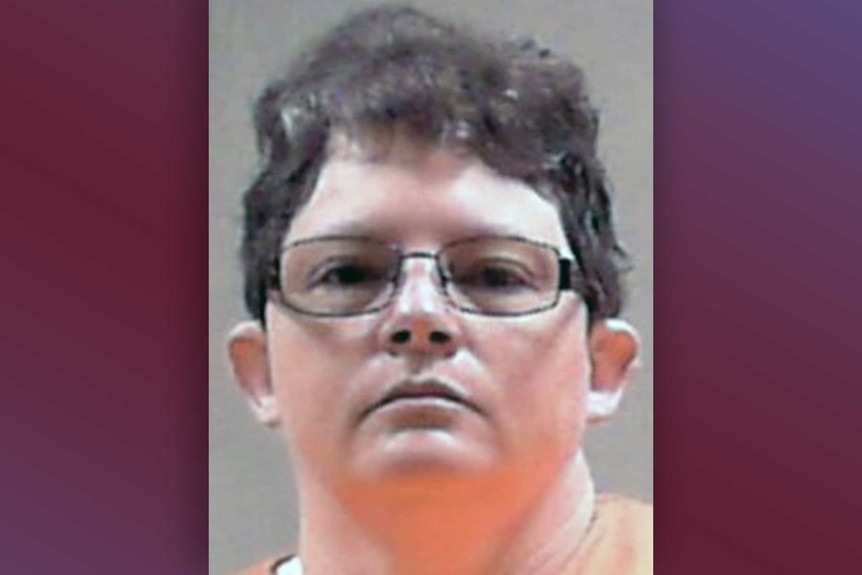Create a free profile to get unlimited access to exclusive videos, breaking news, sweepstakes, and more!
Why Did a Female Nurse Go To "the Dark Side" and Start Murdering Elderly War Vets?
Reta Mays was caught after hospital staff noticed a disturbing pattern of unusual deaths.
She claimed to be an "Angel of Death," but Reta Mays was no mercy killer.
The nursing assistant had cared for countless patients at the Veterans Health Administration (VA) Hospital in West Virginia where she was employed, even receiving the Nursing Assistant of the Year Award. But something horrific was happening behind the scenes, as one elderly veteran after the other mysteriously died. A new Season 33 episode of Snapped looks at this unusual case of a female serial killer and shares the victims’ life stories through interviews with their families.
Reta Mays was ultimately suspected of killing eight patients — all men in their 80s or 90s — by injecting them with insulin. After a two-year investigation by the FBI and VA special agents, she was finally put behind bars.
How Reta Mays Was Caught
The deadly nursing assistant had flown under the radar at the Lewis A. Johnson Medical Center until Russell Posey, 92, was admitted in June 2018.
Posey had been successfully treated for pneumonia and moved to Ward 3A to recuperate in anticipation of a discharge, recalled his son Vincent Posey on Snapped. But in the middle of the night, after a Father’s Day gathering with family in his hospital room, the WWII Navy veteran had a sudden hypoglycemic event, causing his blood sugar to plummet to 14. He was non-diabetic and had no prior problems with sugar.
Don't miss the latest in true crime:
Woman Seduces Ex-Cop Through AOL Chat Rooms and Cons Him Into Murdering Her Husband
Victim's Family Fights Release of Ex-Detective Found Guilty of Murder: "She Lied for Decades"
What Really Happened to Amy Lynn Bradley, a Woman Who Vanished From Her Cruise Ship?
“You can’t spend much time with a blood sugar in the 10s or 20s. It is very unusual, and it’s incredibly rare. You’re going to start considering organ system failures,” said Dr. Julie Kroviak, VA’s OHI Principal Deputy Assistant, in an interview on Snapped.
After pumping three bags of life-saving dextrose into his system, Posey regained consciousness, but “he was never the same after that. He didn’t recognize people. He was talking to people who weren’t there,” said his son Vincent.
Posey died two weeks later.
The case caught the attention of hospital administrators, who conducted an official review of hospital procedures. A shocking pattern emerged: Many patients had unexplained hypoglycemia, with six incidents just in that year.
“All of these men were in the 80s and 90s. All of them suffered a very similar hypoglycemic event,” said Ashley Archibald, an FBI Special Agent, and all except one were non-diabetic.
Who were Reta Mays' victims?
The killing spree began in July 2017, and investigators traced the location to Ward 3A. The first victim, retired Navy officer Robert Edge, Sr., was admitted for a urinary tract infection and died within 24 hours due to a sudden hypoglycemic event. He was the only diabetic of all the victims, but as his daughter, Elizabeth, explained on Snapped, “He was not receiving insulin from the hospital, and it was not on his charts at all.”
In January 2018, Korean War vet Robert Cozell, 89, was admitted overnight and also died of similar causes. Two months later, in March, Archie Edgell, 84, another Korean War vet, was admitted for dementia and died right before discharge due to an extreme hypoglycemic event.
That same month, George Shaw, Sr., 81, a retired Air Force officer, went to the VA for mild symptoms of dizziness, but his blood sugar soon crashed.
“He kept trying to tell us something the whole time,” shared daughter Mary Wood. “He kept pointing … and trying to talk. We knew he was trying to tell us something, but we didn’t know what for sure. It took him two weeks to pass away. He suffered, organ after organ after organ shut down.”
Notably, Snapped detailed how Shaw’s family members suspected a drug mix-up, but at the time, the incident was not referred up the chain of command. Lisa Rein, an investigative reporter with The Washington Post, weighed in on the puzzling silence: “There were members of the hospital staff … who became very alarmed, but VA hospitals generally have a culture that makes it very hard for people to come forward.”
An additional two deaths occurred in April 2018: a 96-year-old vet identified by his initials. — W.A.H. — and 82-year-old Felix McDermott, a former paratrooper in the 101st and 82nd Airbourne Divisions. McDermott was admitted for pneumonia, and a call suddenly came in that “his sugar had failed, bottomed out,” said daughter Melanie, who noted he never had problems with sugar before. “The choice was made to let him pass.”
Two months later, Raymond Goldman became the seventh victim.
Reta Mays Becomes a Serial Killer Suspect
“The term Angel of Death began to present itself early in the investigation, and the rumor mill spread around the hospital… the thought process that crosses your mind is, ‘Do we have a serial killer on our hands?’” explained OIG special agent Keith Vereb on Snapped.
Hospitals typically document everything, and the agents had a trove of employee timecards and logs to sift through.
“We quickly learned that nursing assistant Reta Mays was the 3A employee who was working when all the hypoglycemic events occurred,” recalled Colin Davis, the OIG Resident Agent in Charge. One of Mays’ tasks was checking blood sugar levels for diabetic patients, and the “sitter logs” showed that she was sitting one-on-one with many of the victims just before their deaths.
Nursing staff used glucometers to check blood sugar levels, and the glucometer logs also held key information.
“Reta Mays took a disproportionate amount of the severely low blood sugar readings as opposed to other staff,” Vereb told show producers.
But it wasn’t enough for an arrest, and the hospital said they had no grounds for firing, so agents had Mays transferred to the mail room for the time being.
What was Reta Mays’ motive?
Investigators float several theories on Snapped, from PTSD to trouble in her personal life, but Reta Mays’ motives remain a mystery.
Records did show that she watched a crime show about nurses who killed, and in several episodes, the weapon of choice was insulin.
Mays had served in the Army National Guard from 2001 to 2004 during The Iraq War, where she was deployed as a chemical munitions repair person. After an honorable discharge, she found work as a corrections officer at a local jail but left her job amid an internal investigation.
Washington Post reporter Lisa Rein further elaborated on Snapped: “She had been accused in several complaints of being excessively harsh and holding prisoners while another guard was alleged to have kicked a prisoner.”
At the time of the murders, she was in her late 40s and married with two sons, and her personal life had taken a wrong turn.
“We learned that her husband, Gordon Mays, was actually currently serving a six-year sentence stemming from a conviction for child pornography,” said Vereb.
Investigators wondered if her troubles played a role.
Where is Reta Mays Now?
At first, Mays cooperated with the investigation and even agreed to a five-hour interview with the FBI, footage of which is shown on Snapped. But she soon lawyered up, and the agents decided the only way to move forward was to exhume the remains of the victims for forensic autopsy. The victims’ families unanimously agreed.
Insulin injection sites were discovered on all of the bodies, and seven of the eight victims were classified as homicides. Because Russell Posey had lived two weeks after his hypoglycemic event, the medical examiner couldn’t determine that an insulin injection caused his death.
Mays voluntarily surrendered after receiving a reverse proffer.
“It’s a layout of the case that would be presented against their client,” explained Archibald, adding that she was facing the death penalty. “At that point, they started working out a plea deal.”
She pleaded guilty to seven counts of second-degree murder and one additional count of attempted murder for Posey’s death and will spend the rest of her life behind bars: seven life terms plus an additional 20 years for attempted murder. The victims’ families later sued the VA for negligence and collectively won a judgment for over $5 million.
Interestingly, part of the plea agreement required that Mays provide a “debrief,” which would hopefully provide insight into a motive. According to Prosecutor Jarod Douglas, her reasoning was contradictory, first claiming these were “mercy killings” and then blaming her chaotic home life, saying killing gave her a sense of control.
Perhaps we’ll never know the real reason, as Vincent Posey said on Snapped, “I have no idea why she went to the dark side and started playing God.”
Watch new episodes of Snapped at 6/5c on Oxygen on Sundays, and the next day on Peacock.



































